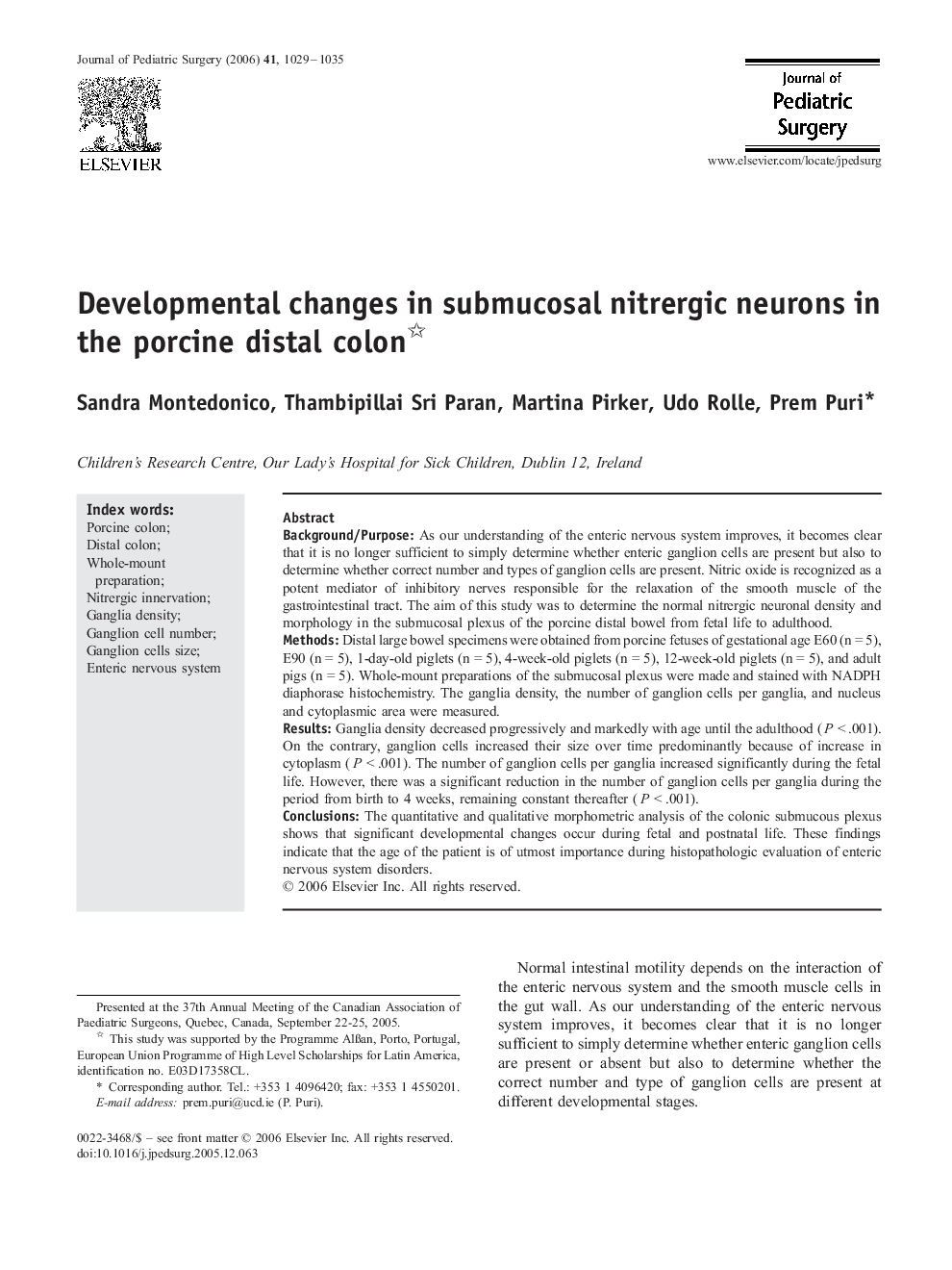| Article ID | Journal | Published Year | Pages | File Type |
|---|---|---|---|---|
| 4160431 | Journal of Pediatric Surgery | 2006 | 7 Pages |
Background/PurposeAs our understanding of the enteric nervous system improves, it becomes clear that it is no longer sufficient to simply determine whether enteric ganglion cells are present but also to determine whether correct number and types of ganglion cells are present. Nitric oxide is recognized as a potent mediator of inhibitory nerves responsible for the relaxation of the smooth muscle of the gastrointestinal tract. The aim of this study was to determine the normal nitrergic neuronal density and morphology in the submucosal plexus of the porcine distal bowel from fetal life to adulthood.MethodsDistal large bowel specimens were obtained from porcine fetuses of gestational age E60 (n = 5), E90 (n = 5), 1-day-old piglets (n = 5), 4-week-old piglets (n = 5), 12-week-old piglets (n = 5), and adult pigs (n = 5). Whole-mount preparations of the submucosal plexus were made and stained with NADPH diaphorase histochemistry. The ganglia density, the number of ganglion cells per ganglia, and nucleus and cytoplasmic area were measured.ResultsGanglia density decreased progressively and markedly with age until the adulthood (P < .001). On the contrary, ganglion cells increased their size over time predominantly because of increase in cytoplasm (P < .001). The number of ganglion cells per ganglia increased significantly during the fetal life. However, there was a significant reduction in the number of ganglion cells per ganglia during the period from birth to 4 weeks, remaining constant thereafter (P < .001).ConclusionsThe quantitative and qualitative morphometric analysis of the colonic submucous plexus shows that significant developmental changes occur during fetal and postnatal life. These findings indicate that the age of the patient is of utmost importance during histopathologic evaluation of enteric nervous system disorders.
